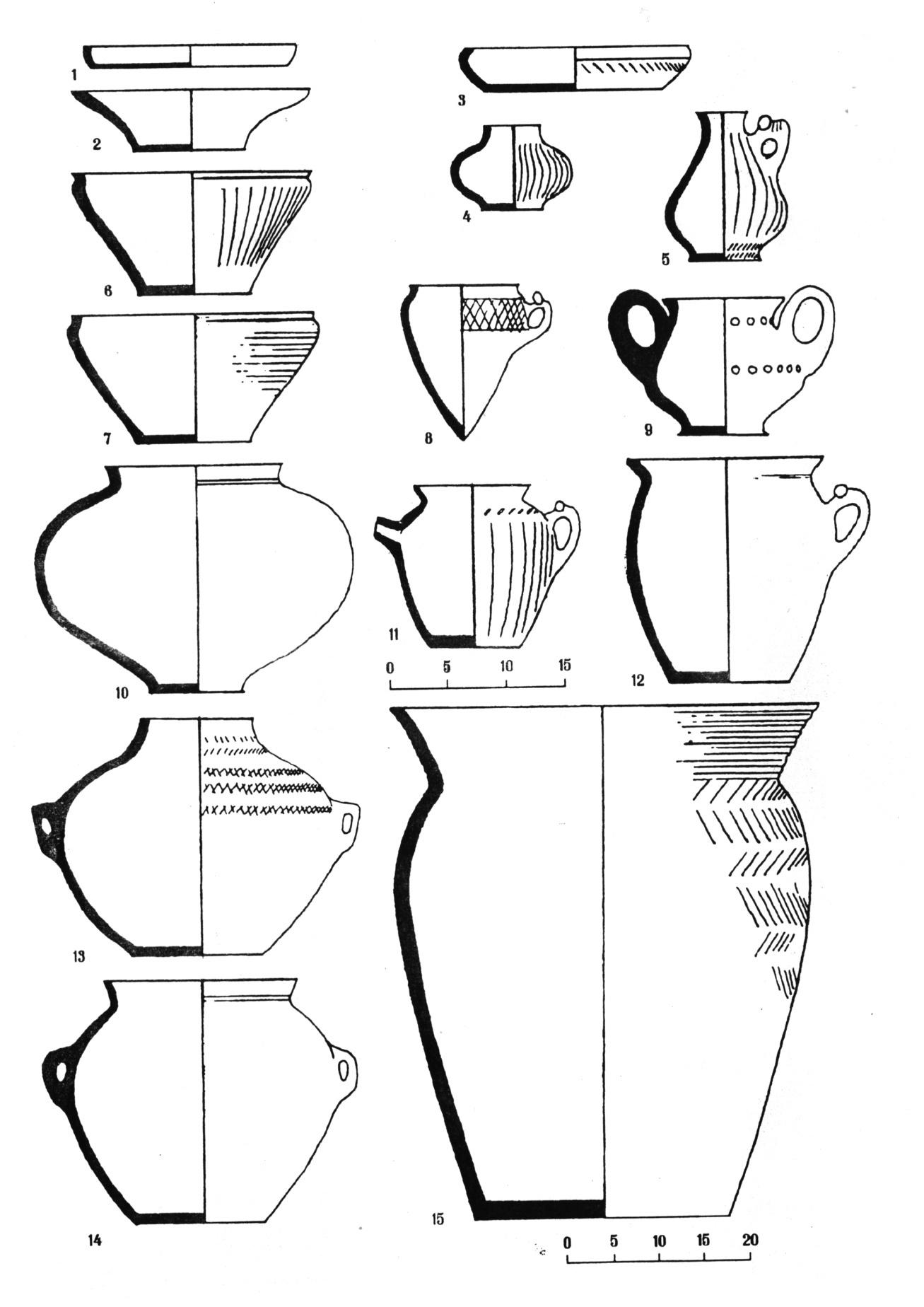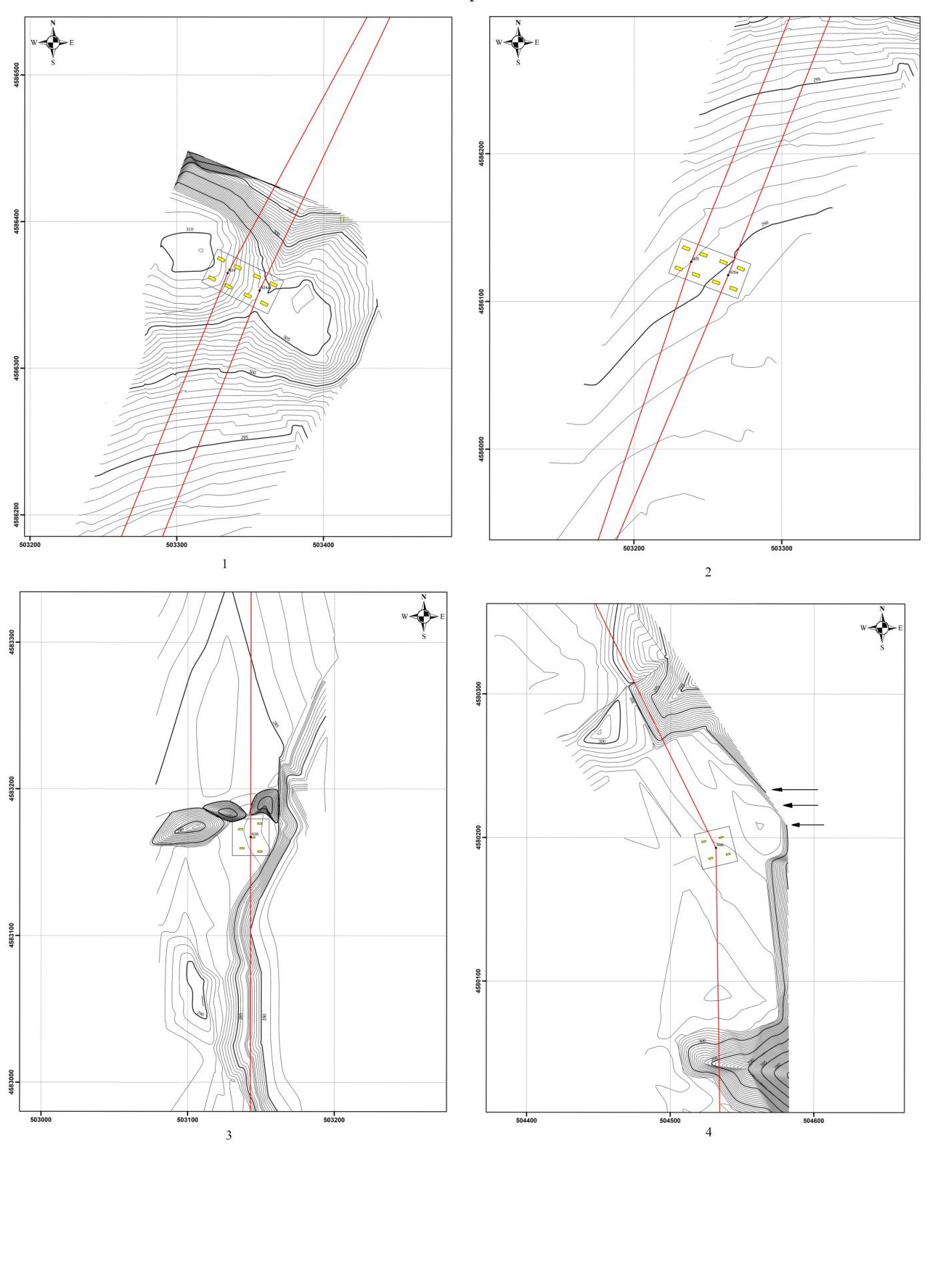
6 minute read
Gogochuri G., Shatberashvili V. Painted Pottery from Norio Settelment
Giorgi Gogochuri, Vakhtang Shatberashvili Georgian National Museum (Georgia, Tbilisi)
Painted Pottery from Norio Settelment
Advertisement
Summary
The Norio settlement (located near Tbilisi, on the mountain range of Ialno) was excavated by the expedition of GNM O. Lordkipanidze Archaeological Institute in 2018. The settlement was built on the terraces. The remains of 36 half-dug dwellings were revealed here. The floors were plastered with clay, and the roofing should be flat. In the interior bakeries, altars built from stone, and storage pits were attested. According to the archaeological material the settlement can be dated to the 4th- 3rd cent. BC.
The article refers to the painted pottery found at the site. It should be noted, that such pottery is one of the most interesting, important and also characteristic artifacts for the mentioned epoch (during this period it was spread so widely, that it is often referred to the painted pottery).
The vast majority of painted ware of this period is monochromic - red or white painted, rarely there are some black painted ones, as to polychromic examples they seem to be very rare (several examples from Nastagisi and Tsikhiagora).
The painted pottery from Norio is a good exception: here we have all of listed examples.
Red painted pottery. 102 fragments of red painted pottery were revealed at the site. Most of them were made of high quality clay, and the painting was coated on the polished surface. The vessels decorated by triangles are represented by the triangles with their points up. Some triangles are filled with triangles (fig. I 1,2,3,7), others with net-like ornament (fig I 4), in addition these vessels are decorated with the ornament of secondary importance – dots, horizontal lines, zig-zags. The vessels decorated with painted triangles from Georgia are dated to the 4th century BC. The vessels decorated with colored triangles (figs. I, 5,6; II 3) seem to belong to the 4th- 3rd cent. BC. The fragment of the big vessel is decorated in two rows: the upper row is painted with colored triangles with coniferous edges. The lower row is decorated with the same ornament, and triangles filled with the herringbone ornament (fig. II 1). The fragment of the jug is also painted in two rows (fig. I 8) and bear the stylistic features of so called Samadlo style, which is dated to the 4th-3rd cent BC. The fragments of vessels partially painted with red color (fig. III 5) or decorated by only horizontal lines (fig. III 1-4) belong to the Kazreti Style, which is usually painted on the rough surface and is more characteristic for the late Hellenistic period. This ornament from Norio vessels is coated on the polished surface, which is why they belong to the 4th-3rd cent BC.
White painted pottery. 491 fragments of white painted pottery was found at the site. Most are made of high quality clay and covered with the thin engobe. The ornament is simple: it is represented by horizontal, paralel lines. In addition, some have incised wawe-like lines and oblique notches (figs. V, VI). It is believed that such pottery appeared first on the territory of Kakheti ( where it was in use from the 4th c BC to the 4th century AD) and after that in Kartli, where it was brought from Kakheti during the 4th-3rd centuries and manufactured at the place in the 2nd-1st centuries BC.
Black painted pottery. 5 pieces of black painted pottery were revealed at Norio settlement. The painting is coated on the smooth, but not engobed surfaces of big vessels - jars or pythoses. Here we can see a circle(fig. VII4), two paralel lines crossing other two ones (fig.
VII3). One fragment of jar is decorated with the wawe-like, black line (fig. VII5). The only example of engobed vessel has a black, horizontal line which covers incised wawe-like ornament (fig. VII6). The black painted pottery were found in small quantities at the sites of 4th-3rd centuries BC in Georgia.
Polichromic pottery. Two pieces of polychromic pottery were found at the site. One of them is covered with transparent engobe/ The neck has oblique notches and the shoulder is covered with white horizontal , paralel lines. The ornamentation was completed with coarsly coated black triangles (fig.VII 2). The shoulder of another example is ornamented with incised wawe-like, horizontal line. Below them two paralel, horizontal lines are coated with black color and among them the white lines are also visible (fig.VII 1).
As we have seen above, monochromic (red, white and black painted) and polychromic painted pottery were unearthed during the excavations of Norio settlement. The fact that all of them were found on one settlement is unique for this moment and needs further research.
bibliografia:
gagoSiZe iulon, TrialeTis samarovnebi, Tbilisi 1982. gogoWuri giorgi, antikuri xanis masalebi marneulis municipalitetidan, iberia-kolxeTi # 15, Tbilisi, 2019. 107-141. gogoWuri giorgi, SatberaSvili vaxtang,Nnorios antikuri xanis namosaxlarze 2018 wels Catarebuli arqeologiuri gaTxrebis mokle angari-
Si, 2018 wels Catarebuli arqeologiuri gaTxrebis mokle angariSebis krebuli, Tbilisi, 2019, 333-334. Tolordava vera, dakrZalvis wesebi elinisturi xanis saqarTveloSi, Tbilisi, 1983. maxaraZe giorgi, laSxi laSa, sairxis elinisturi xanis keramika (sabaduris goris arqeologiuri masalis mixedviT), saqarTvelos xelovnebis saxelmwifo muzeumis narkvevebi, N3 - Tbilisi, 1997, 38-60. maxaraZe zurab,^ axali aRmoCenebi cixiagoraze,^ Ziebani #4^ Tbilisi, 1999, 57-59. narimaniSvili goderZi, SatberaSvili vaxtang,QZv.w. V-I saukuneebis wiTlad moxatuli keramika qarTlidan (stilisturi analizi,^qronologia), Ziebani #9^Tbilisi, 2002, 57-70. narimaniSvili goderZi, daraqois namosaxlari da samxreT kavkasiis aqemeniduri xanis istoriis zogierTi sakiTxi, iberia-kolxeTi # 5, Tbilisi, 2009. narimaniSvili goderZi, aRmosavleT saqarTvelos Zv.w. VII – ax.w. VII ss keramika nawili II, iberia-kolxeTi # 14, Tbilisi, 2018. ficxelauri konstantine, aRmosavleT saqarTvelos tomTa istoriis ZiriTadi problemebi (Zv. w. XV-VII ss), Tbilisi, 1973. qoriZe domenti, Tbilisis arqeologiuri Zeglebi, t. II, Tbilisi, 1958. SatberaSvili vaxtang, qvemo qarTli Qqr.w. IV-I saukuneebSi (arqeologiuri masalis mixedviT), sakandidato disertacia, Tbilisi, 2005. ZnelaZe merab, abulmugis samarovani, kreb. dmanisi III, Tbilisi 2001, 140-255, tab. VII. wiTlanaZe leila, varsimaanTkaris samarovani, Jinvali I, Tbilisi, 1983. WilaSvili levan, naqalaqari urbnisi, Tbilisi, 1964. xaxutaiSvili daviT, ufliscixe I, Tbilisi, 1974. xaxutaiSvili daviT, ufliscixe II, Tbilisi, 1970.
Dyson Robert H. Jr. The Achaemenid painted pottery of Hasanlu III a, Anatolian Studies, Vol. 49, Anatolian Iron Ages 4. Proceedings of the Fourth Anatolian Iron Ages Colloquium Held at Mersin, 19-23 May 1997 (1999). Summers Geoffrey D., Archaeological evidence for the Achaemenid period in Eastern Turkey”,
Anatolian Studies, Journal of the British institute of Archaeology at Ankara vol 43 1993, 98- 123. Summers Geoffrey D. and Burney Charles A, Late Iron Age pottery from northwestwern Iran: the evidence from Yanik Tepe, Ancient Near Eastern Studies, Suppplement 39, Anatolian
Iron Ages 7, The proceedings of the seventh Anatolian Iron Ages Colloquium held at Edirne, 19-24 April, Leuven - Paris – Walpole 2010, 269-316. Giorgi Zkitishvili, Der Frühhellenistische Feuertempel von Kavtiskhevi, Archäologische Anzeiger, Berlin,1995, 83-98. Бохочадзе Алексей, Раскопки на территории городища Саркине и Грдезли Миндори,
ПАИ в 1976 г., Тбилиси, 1979, 106-117. Бохочадзе Алексей, Мирианашвили Нино, Основные итоги работ Настакисской археологической экспдициив 1975-79 гг. Раскопки на Археологические исследования на новостроиках Грузинскои ССР. Т II, Тбилиси, 1982, 111-123 Гагошидзе Юлон, Самадло, археологические раскопки, Тбилиси, 1979. Гагошидзе Юлон, Самадло, каталог, Тбилиси, 1981. Нариманишвили Годeрдзи, Керамика Картли V-I вв. до н.э., Тбилиси, 1990. Пицхелаури Константин, Памятники второй половины 1 тысячелетия до н.э. на территории Кахетии. - СА №3, М. 1977, 221-229.
Рамишвили Рамин, Джорбенадзе Виссарион, Чиковани Гурам, Глонти Медея, Гогочури Гиоргий, Цитланадзе Леила, Мухигулашвили Нели, Чихладзе Вера, Робакидзе Цисана, Ломидзе Цисана, Циклаури Иван, Рчеулишвили Гиоргий, Маргве-
лашвили Маквала, Каландадзе Зураб, Бучукури Ана, Археологическое изучение
Арагвского ущелья, ПАИ в 1985 г., с. 74-89, Тбилиси, 1987. Тушишвили Николоз, Маргишвили Сосо, Экспедиция Алгетского ущелья, ПАИ в 1986 г., Тбилиси, 1995. 34-40.
tabulebis aRweriloba:
I - IV. wiTlad moxatuli WurWeli. V - VI. TeTri angobiT moxatuli WurWeli. VII. poliqromuli (1,2) da Savad moxatuli (3-6) WurWeli.
Illustrations:
I - IV. Red painted pottery. V - VI. White painted pottery. VII. Polichromic (1,2) and black painted (3-6) pottery.
I
II

III

IV

V

VI

VII











